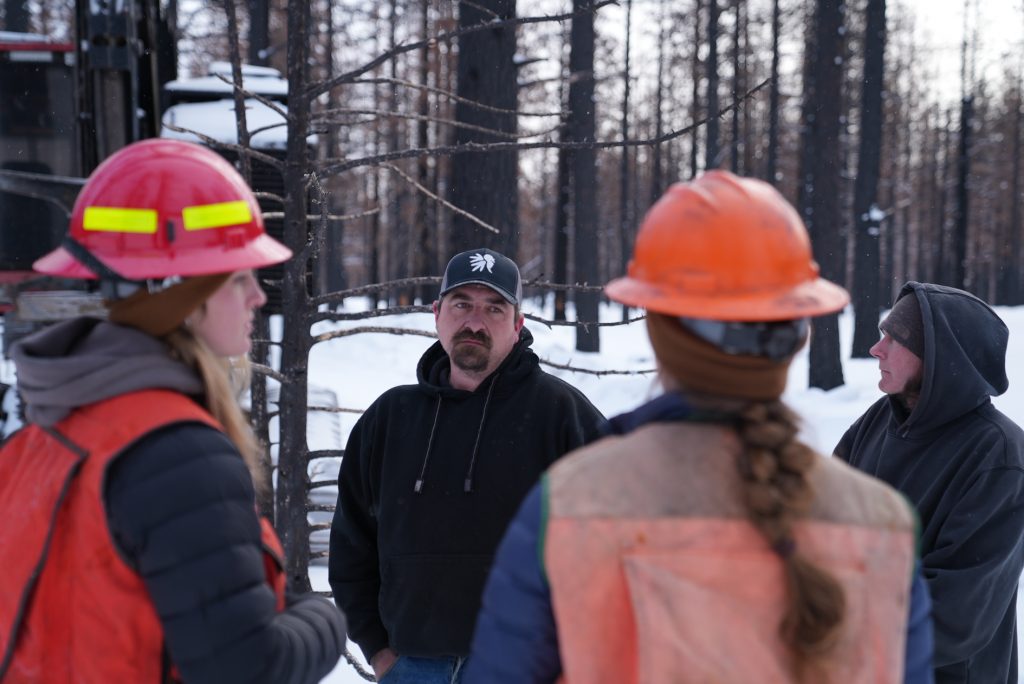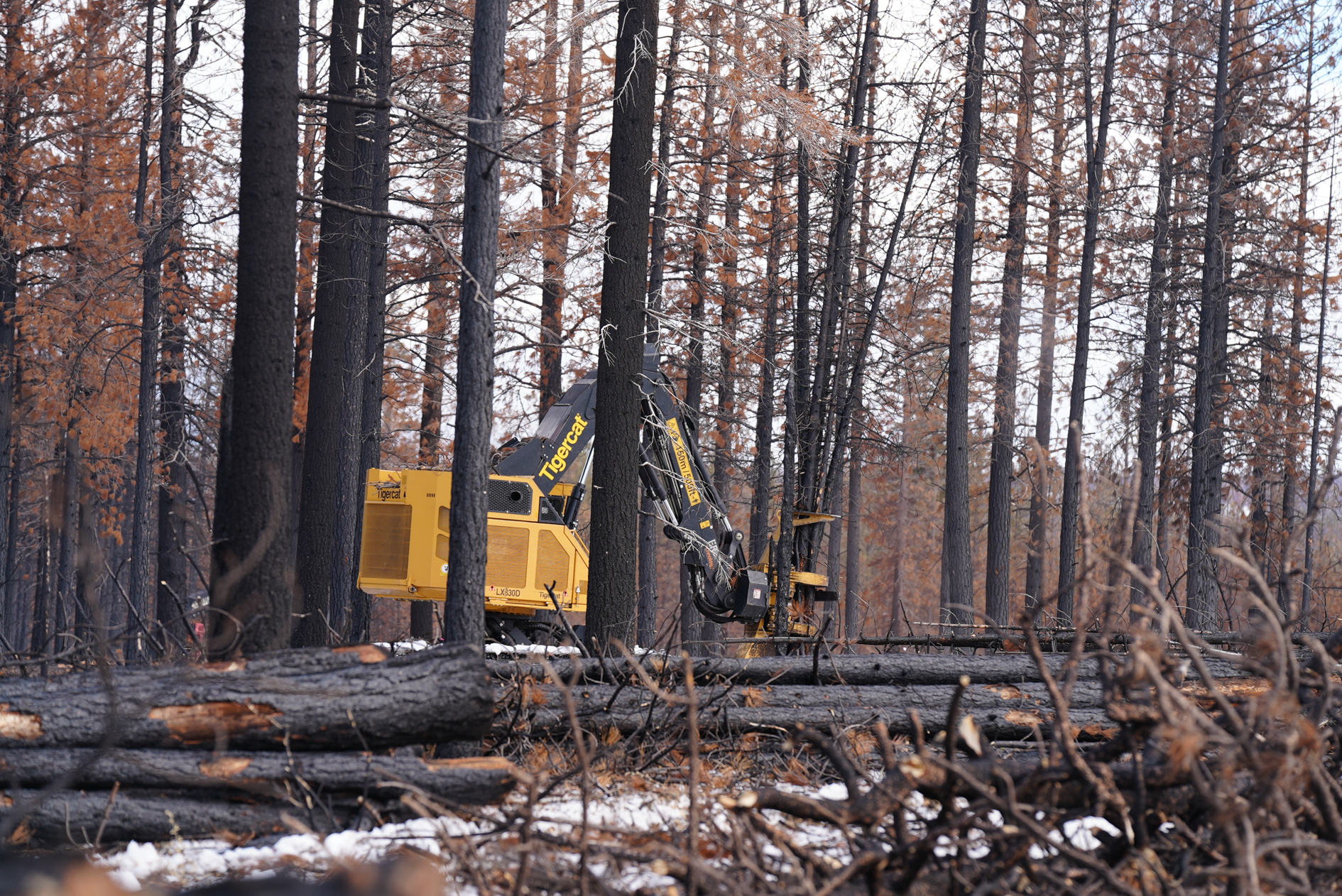Work for the Timber Transport Pilot Commences
Work under the new 20-year national master stewardship agreement between the NWTF and the USDA Forest Service began on March 29. The Forest Service and partners from the California Deer Association began harvesting timber as part of a 2,746-acre timber removal project in the Klamath National Forest located in northern California.
“It’s fantastic to be a part of such an incredible partnership that is driven to get this much-needed work done," said Dale MacDougall, California Deer Association State Project Director. "From the leadership and support from the USFS, both nationally and regionally, to the inviting nature and strength of the NWTF family, along with industry partners, the energy has been incredible. There are so many folks committed to carrying part of this workload, and all have done an incredible job in doing so. This is a perfect example of partners sharing a vision for large scale restoration for the benefit of wildlife and forest health."
The timber harvested in this project is set to embark on its journey by railcar — a method considered “old-fashioned” in today’s world of multi-modal transportation. However, the NWTF views this antiquated method of transportation through a lens that considers the ecological, social and other values of the work being done. With this timber transport pilot, the NWTF is testing a proof of concept that may create a new model for implementing the crucial work ahead.
“We are proud to be a part of this innovation and partnership to benefit local communities, industry and landscape resilience," said Rachel Smith, forest supervisor for the Klamath National Forest. “This partnership bolsters the forest’s efforts to reduce the risk of catastrophic wildfire to rural communities as part of the Forest Service's Wildfire Crisis Strategy."

Northern California, including the Klamath National Forest, is known for devastating wildfires, partly attributed to forests that are over-stocked with trees. The Forest Service reports that many areas in the Klamath National Forest exceed 500 trees per acre, resulting in interlocked crowns and declining growth. These conditions lead trees to become suppressed and weakened, eventually becoming susceptible to stress and insect/disease-related mortality. These small ladder fuels, combined with accumulating ground fuels from fallen dead trees, increase the risk of catastrophic loss from wildfire.
“The severe, uncharacteristic wildfires we’ve seen in recent decades are truly a wildfire crisis,” said Tom Spezze, the NWTF’s national director of field conservation/state policy. “Forest health is no longer just a natural resource issue or a forest issue, it’s a national emergency, a watershed health issue and a human health and safety crisis.”
Restoring the forests to more suitable tree densities, age and size classes is intended to decrease wildfire risk, essential for California residents and individuals living in or near forested areas throughout the West.
“The NWTF is committed to helping the USFS by being a part of the wildfire crisis solution,” Spezze said. “And, while the focus is on communities, severe wildfires are also converting forested wildlife habitats to brush or grasslands, decreasing the wildlife habitat value.”
By removing surplus trees from regions like the Klamath National Forest, a fire-resilient forest can be developed, capable of rebounding after a fire and fostering a naturally healthy ecosystem for wildlife, improving water quality and quantity, and providing more outdoor recreation activities.
Along with the timber harvest, the project involves 1,605 acres of brush mowing and juniper felling, 592 acres of juniper reduction, 264 acres of plantation thinning, and 866 acres of mastication for fuel reduction and wildlife habitat enhancement work in the forest.
Once the groundwork is complete, forest products will be transported by railcar as the second component of this multi-faceted approach to forest restoration. The logs must first be transported to Gilchrist Forest Products in Gilchrist, Oregon, where they will undergo debarking to eliminate bark beetles. Subsequently, the debarked logs will be inspected and transported to a railyard in Klamath Falls, Oregon, where they will receive another inspection before being loaded onto railcars for transportation to Wyoming.

Once on railcars, the logs will begin their nearly month-long journey to Devils Tower Forest Products Inc. in Hulett, Wyoming. This small-town community relies heavily on the Black Hills sawmill as a critical economic driver. Transportation of the timber to Wyoming will aid in providing a sustainable supply of timber to support the ongoing operation of the mill, creating a stable economy in the area.
“The fact that, in addition to restoring forests, we’re sustaining a community, makes this project really special,” Spezze said.
Overall, the project aims to restore forests, improve biodiversity and protect other natural resources while benefiting all stakeholders involved.
“This only works where there is surplus timber,” Spezze said. “The NWTF is committed to making sure that all partners are whole. We realize that there is no sense in a pilot that isn’t equitable for local contractors and businesses.”
About the National Wild Turkey Federation
Since 1973, the National Wild Turkey Federation has invested over half a billion dollars into wildlife conservation and has conserved or enhanced over 22 million acres of critical wildlife habitat. The organization continues to drive wildlife conservation, forest resiliency and robust recreational opportunities throughout the U.S. by working across boundaries on a landscape scale.
2023 is the NWTF's 50th anniversary and an opportunity to propel the organization's mission into the future while honoring its rich history. For its 50-year celebration, the NWTF has set six ambitious goals: positively impact 1 million acres of wildlife habitat; raise $500,000 for wild turkey research; increase membership to 250,000 members; dedicate $1 million to education and outreach programs; raise $5 million to invest in technology and the NWTF's people; and raise $5 million to build toward a $50 million endowment for the future. Learn how you can help us reach these lofty goals.
